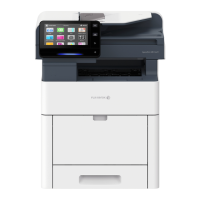19 Appendix
510
You can set whether or not to display the authentication confirmation screen at accessing the web
application. Refer to "[When Sending User Details]" (P.298).
[User ID]
Enter the User ID to access the remote service.
Depending on the settings on the remote service, the entry for [User ID] may be invalid. Check the settings on
the remote service.
Along with [User ID], set also [Password].
All the specified settings are ignored if the remote service to be connected requires other than a user ID and
its password for authentication.
[Password]
Enter the password to be used for the authentication.
[Notify Device/Authentication]
Set whether or not to notify the remote server of device information and user
authentication information every time the device connects to the remote service.
The remote service determines whether to use the information.
[Notify Authorization Info]
Set whether or not to notify the remote service of user authorization information every
time the device connects to the remote service.
[Functional Code]
Set the functional code as necessary when you use a remote linkage service.
Server Certificate Verification Settings
When accessing Application Web Server (ASP) located on the Internet zone or anywhere,
you can set to verify the server certificate to prevent phishing attacks, as same as the web
browser of Windows.
Verifying the server certificate uses the root certificate of the certification authority that
issues server certificates (CA certificate).
The CA certificate formats that can be used are as follows:
DER encoded binary X.509 (.CER)
Base64 encoded X.509 (.CER)
Cryptographic Message Syntax Standard - PKCS #7 Certificates (.P7B)
For details, refer to "Encrypting HTTP Communications from the Device to a Remote Server (SSL/TLS Client)"
(P.342).
